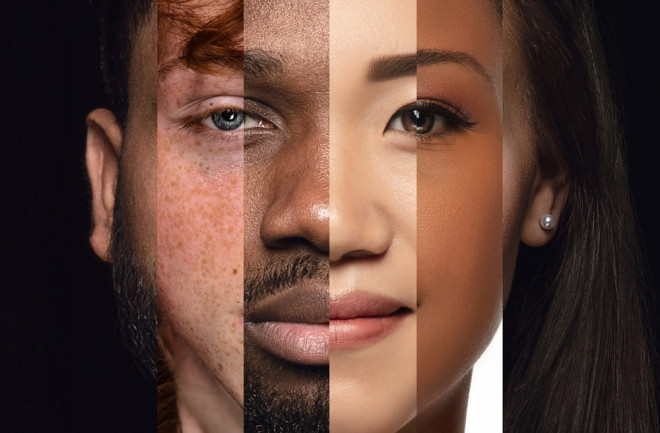What defines humanity? Is it the fact that we can walk upright on two legs? That we have brains big enough to use tools? That we can organize our societies well enough to find wonderful ways of exploiting the resources of the planet — and each other?
While the answer may seem clear enough to anyone who doesn’t think too closely about it, anthropologists — the scientists who actually study humans — aren’t necessarily so certain.
“We’re using this term and it’s not quite colloquial and it’s not quite scientific either,” says Sheela Athreya, a biological anthropologist at Texas A&M University. It also depends on what exactly you’re talking about when you use the word “human.”
What Is a Hominin?
The definition of a hominin is perhaps the widest definition of what constitutes a human. Basically, a hominin is a primate that walks on two feet.
Just the same, there is still some disagreement about which species qualify as hominins, especially the further back you go. For example, take Orrorin tugenensis, a species whose remains have been found in Kenya dating back about 6 million years. Some researchers believe this species was bipedal, which would make them the earliest known hominins, although others aren’t so sure.
Read More: An Ancient Skull Could Prompt the Founding of a New Human Species
Other ancient hominins include Australopithecus. Researchers have categorized a number of different species within this genus, including the well-known Lucy, an Australopithecus afarensis whose fossil remains were discovered in Ethiopia. While it would take more evidence to prove, some anthropologists believe that Orrorin or Australopithecus may be distant ancestors of later hominins such as Homo erectus, H. sapiens, Neanderthals and Denisovans.
What Does Homo Mean?
The word Homo as applied in anthropology comes from the Latin word for human. By this definition, even the oldest of this genus that dates back at least 2 million years — Homo habilis — would be human, as would Neanderthals, Denisovans and H. erectus.
Just as with early hominins, scientists haven’t yet reached consensus on what constitutes the genus Homo, however. Still under dispute, for example, is whether Homo erectus evolved directly from Homo habilis, or whether they both evolved roughly around the same time from a common ancestor.
Some researchers even believe Homo habilis should belong in the Australopithecus category rather than in the Homo genus.
Read More: The 3-Million-Year-Old Lucy Was Built Like a Powerlifter
In any case, one thing that distinguishes Homo erectus, for the most part, is that it was the first hominin yet known to leave Africa. Athreya says that this distinction represents one of the biases among scholars.
“Once we have a dispersal out of Africa, which we call Homo erectus, we start comparing them to more human-like things,” she says, such as relying on tools or adapting to non-equatorial climates. By contrast, many researchers compare hominins before Homo erectus to apes rather than modern humans.
What Are Modern Humans?
Getting closer to what we are today doesn’t necessarily make a clear definition any easier. When Neanderthals and Denisovans were first discovered, researchers believed they were something else entirely.
For a time, some researchers even used the redundant-sounding term Homo sapiens sapiens to separate us from Neanderthals, which are sometimes classified as Homo sapiens neanderthalensis. In common English, researchers separated us from Neanderthals by using the word “anatomically modern humans.” This more or less refers to such physical features as a lack of brow ridges, less-sloped forehead, and smaller teeth that humans have compared to Neanderthals.
Read More: Who Were the Neanderthals?
But more recently, genetic analysis has revealed that even modern humans, whose ancestors migrated out of Africa, have up to 4 percent Neanderthal DNA. So, to some degree, many Europeans, Asians and Americans are partly made up of Neanderthal genes. “I can’t say Denisovans or Neanderthals are a real thing and here are its parameters,” Athreya says, adding that the arguments for these classifications don’t have empirical or philosophical strength to them.
Some of the difficulty here lies within the problem of dividing species in general. If all species are constantly evolving, at what point do we say they’ve become something else?
Are Humans Too Biased to Classify Ourselves?
In other cases, the problem lies more with the biases of the people who made or support these classifications. The crux of this problem, as far as Athreya is concerned, comes from the fact that anthropologists studying the range of variation in hominins have for generations come from a single background — European.
Being a brown, non-Christian paleontologist gives Athreya a unique perspective, she says. If Indigenous Australians or Papuans were leading the conversation, for example, the way that we categorize all the categories and subcategories of hominins would likely look quite different.
“You have the field taken over by people who have very little knowledge on the true range of human variation, both genetic and biological,” she says. A fuller examination of the total variation in traits and genes that humans have might give some researchers a new perspective on the issue — and on the definition of the word human.
Read More: It’s Time to Expand Our Definition of “Human Being”
Article Sources
Our writers at Discovermagazine.com use peer-reviewed studies and high quality sources for our articles, and our editors review for accuracy, and trustworthiness. Review the sources used below for this article:
Britannica. Australopithecus.
Australian Museum. Homo habilis.
Cornell Chronicle. Lingering effects of Neanderthal DNA found in modern humans.

